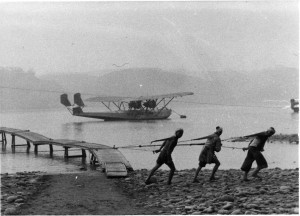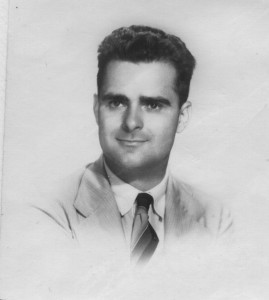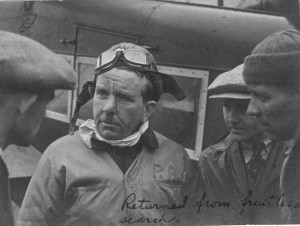Another adventure in the Consolidated Commodore
 On February 4, 1938, Hugh Woods was bringing one of CNAC’s twin-engine Commodore flying boats down from Chungking to Hankow. One-hundred miles west of the temporary capital, one of his oil coolers sprung a serious leak. Woody executed a perfect forced landing on the Han River, but the under-lubricated engine overheated and seized. None of his passengers got so much as a scratch, and CNAC’s sole surviving Loening Air Yacht retrieved them in relays to Hankow.
On February 4, 1938, Hugh Woods was bringing one of CNAC’s twin-engine Commodore flying boats down from Chungking to Hankow. One-hundred miles west of the temporary capital, one of his oil coolers sprung a serious leak. Woody executed a perfect forced landing on the Han River, but the under-lubricated engine overheated and seized. None of his passengers got so much as a scratch, and CNAC’s sole surviving Loening Air Yacht retrieved them in relays to Hankow.

Hugh Woods
Recovering the stranded Commodore was a much larger problem, since the company’s two spare Commodore engines (635-hp Pratt & Whitney T2D1 Hornet Commercial Aircraft Engines), were tangled inside the shipping administration of the Hong Kong-Canton-Hankow railroad — which, since the outbreak of the Battle of Shanghai the previous summer, had been Nationalist China’s most important connection to the outside world. The motors might arrive in a week, but it could well take another month before they appeared. (CNAC apparently hadn’t paid enough squeeze to ensure priority treatment.) There was a wrecked Junkers in Ichang that had engines of the same type – it had been forced down and destroyed by the Japanese – but it belonged to the Generalissimo, and no one would give CNAC Operations Manager Bond permission to cannibalize its idle engines.
For two weeks, the flying boat lay anchored on the Han River where Woody had landed it, but it was right under the flight route of Japanese bombers on their way to and from Ichang, a target they’d pummeled frequently in recent weeks, and the Han River was low. William Bond worried that a junk or sampan in the narrow channel would collide with the Commodore and do further damage. He also had to garrison the plane to prevent it being pillaged by bandits. He badly wanted it returned to Hankow.

Ernie Allison
Finally, one of his mechanics suggested using a spare 575-hp Loening engine that could be accommodated by the same engine mount. The idea seemed reasonable, but Bond didn’t have a spare pilot. However, his old friend Ernie Allison was in Hankow, and Allie was always up for an interesting flight. Bond asked Allie to captain the rescue flight, Allie agreed, and Bond had Allison, himself, two mechanics, and a spare 575-hp engine dropped off at the Commodore’s Han River anchorage by the Loening. Two mechanics unhung and stowed the frozen motor and installed the 575-hp Hornet.
Bond served as Allie’s co-pilot, and the asymmetric arrangement gave the feeling of working a horse and a mule in double harness, which offended Bond’s aesthetic sense, but once Allie got the propellers properly synchronized the Commodore soared off the Han River and flew without trouble. Bond returned it to regular service the next day, February 26, and he rode back to Chungking on the unbalanced Commodore as a passenger – along with twelve other paying customers and a healthy load of airmail.
Weeks passed before they were able to restore the proper engine balance, but CNAC used the plane regardless.
CNAC’s gasoline shortage and Woody’s forced landing: Allie to Florence, February 2, 1938, text provided to the author via email by Nancy Allison Wright, November 2005; Bond to Bixby February 4, 1938, the Bond Papers; Details of the engine failure and the location of the force-down: Bond to Bixby, February 27, 1938, the Bond Papers.
635-hp Pratt & Whitney T2D1 Hornet Commercial aircraft engine: Bixby to Colonel Lam Wei-shing, December 3, 1937, the Bond Papers.
CNAC had two spares of that type tangled in shipping complications with the railway’s freight administration: Bond to Bixby, February 4, 1938, the Bond Papers.
The Hankow-Canton-Hong Kong railroad, Nationalist China’s most important connection to the outside world since the Japanese seizure of the Lower Yangtze: Bosshard, Walter, “Prosperous Hong Kong,” The China Weekly Review, August 27, 1938.
Returning the Commodore to service: Bond to Bixby, February 27, 1938, the Bond Papers.



